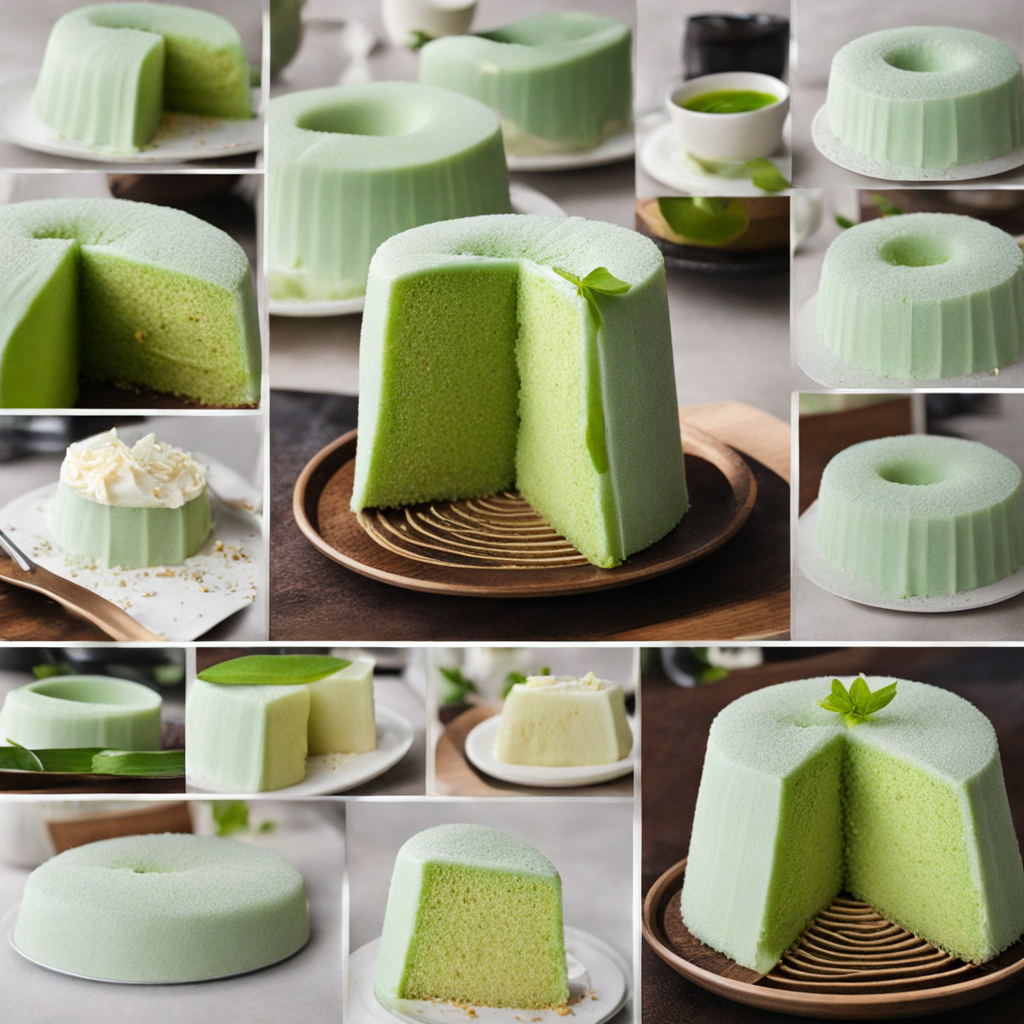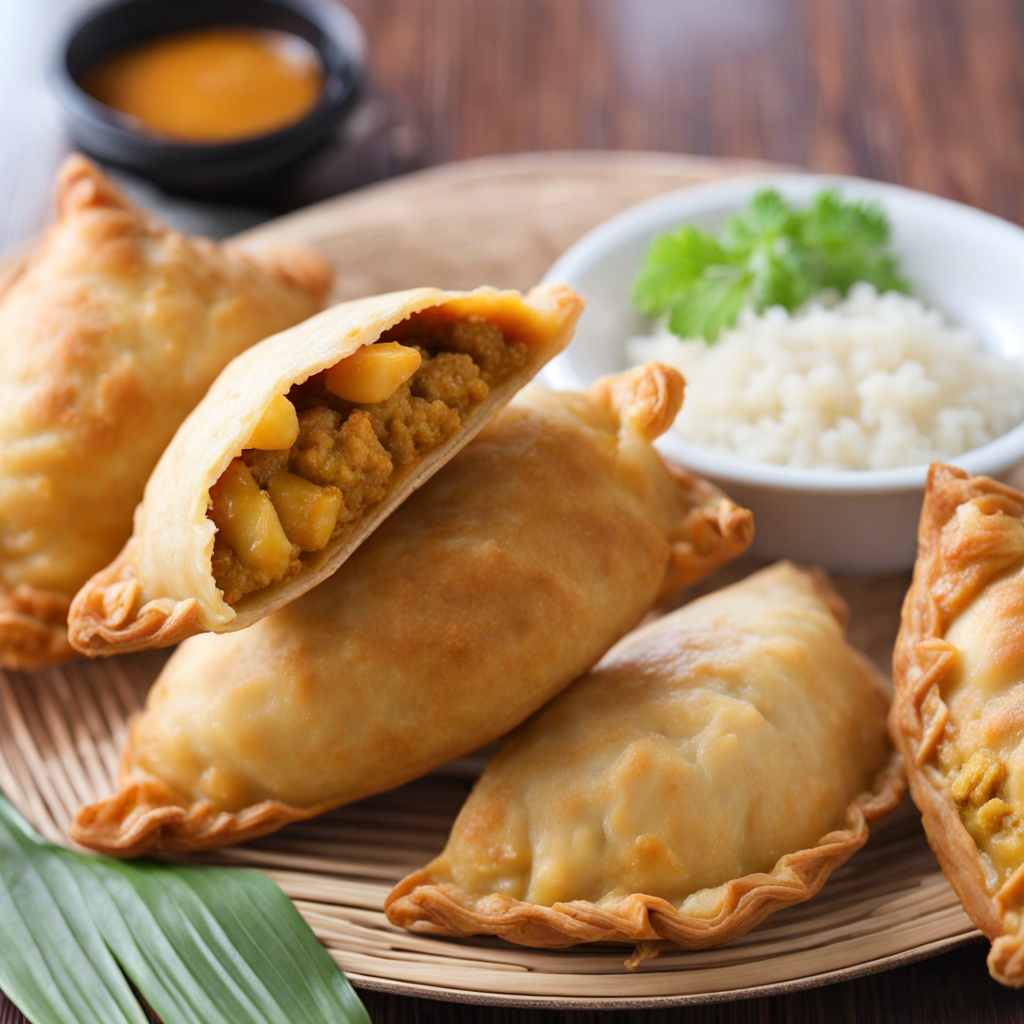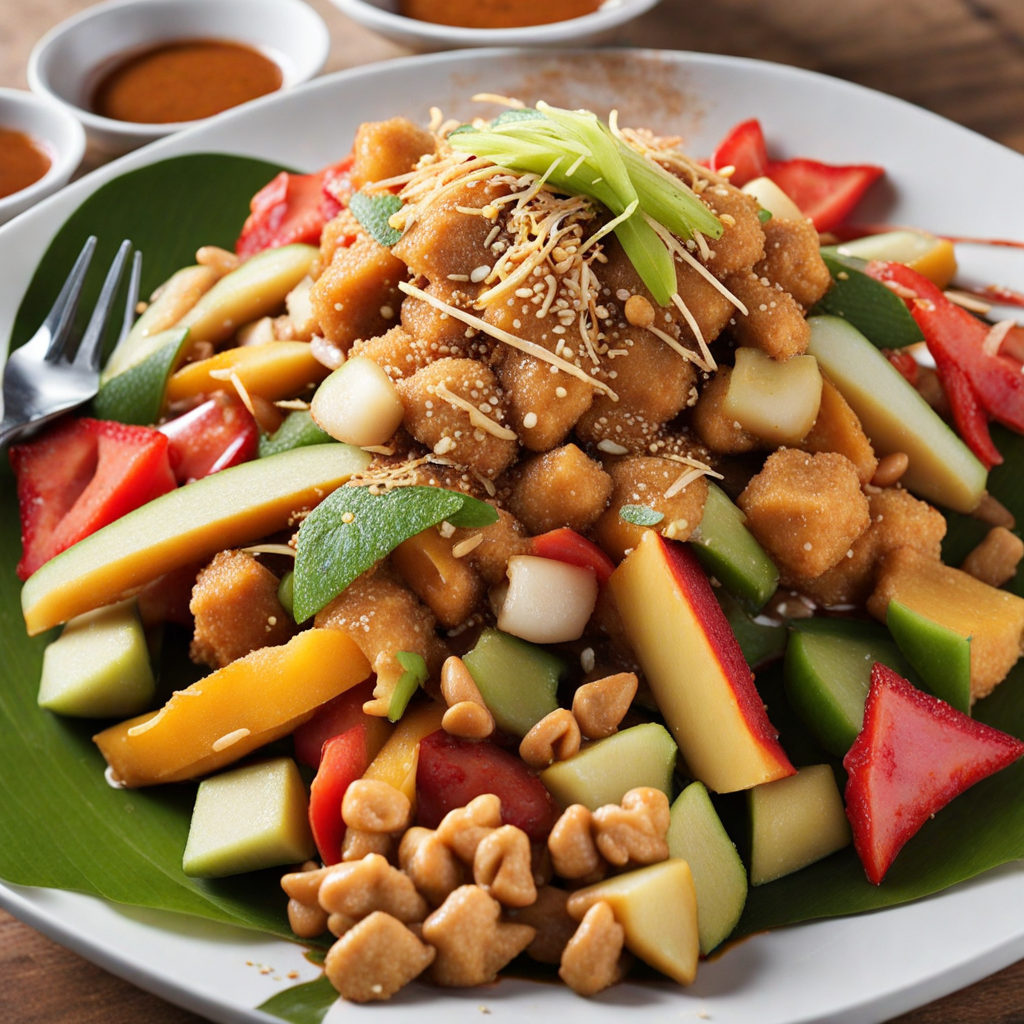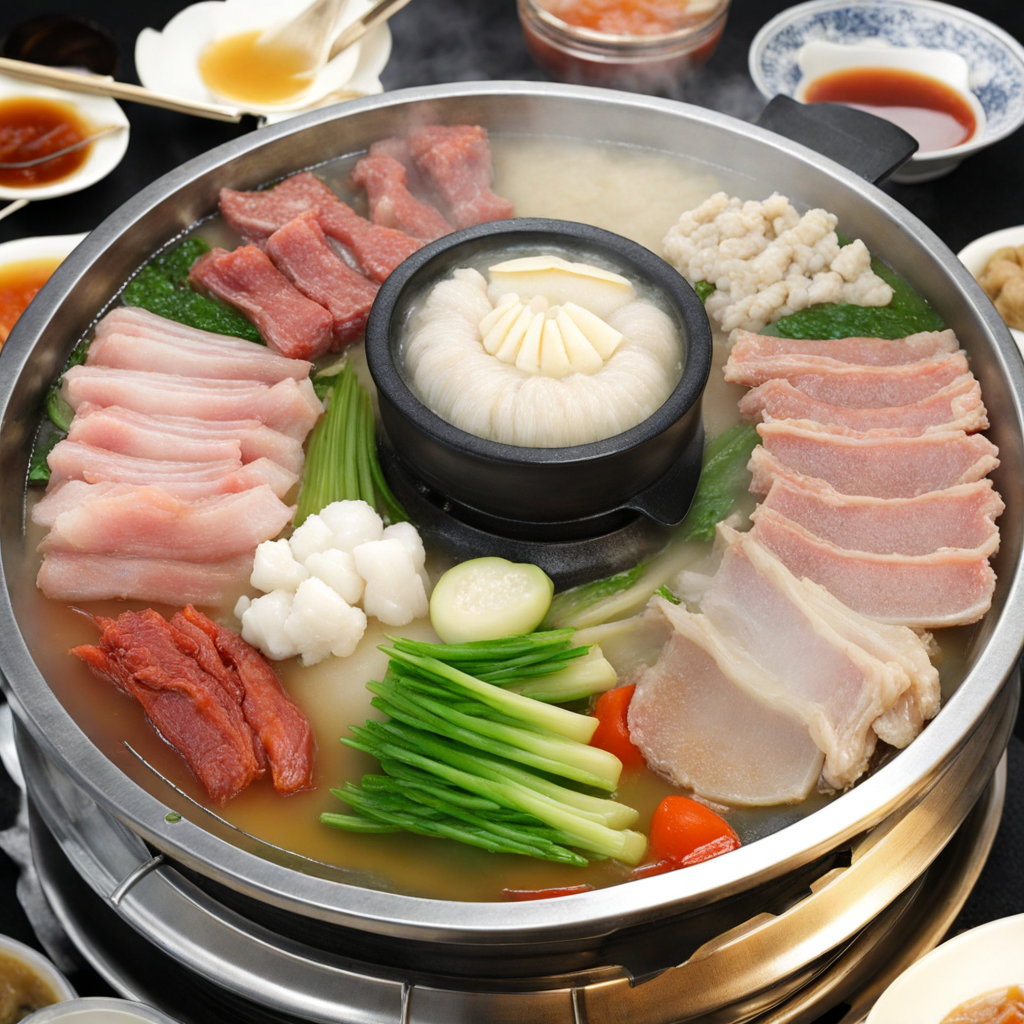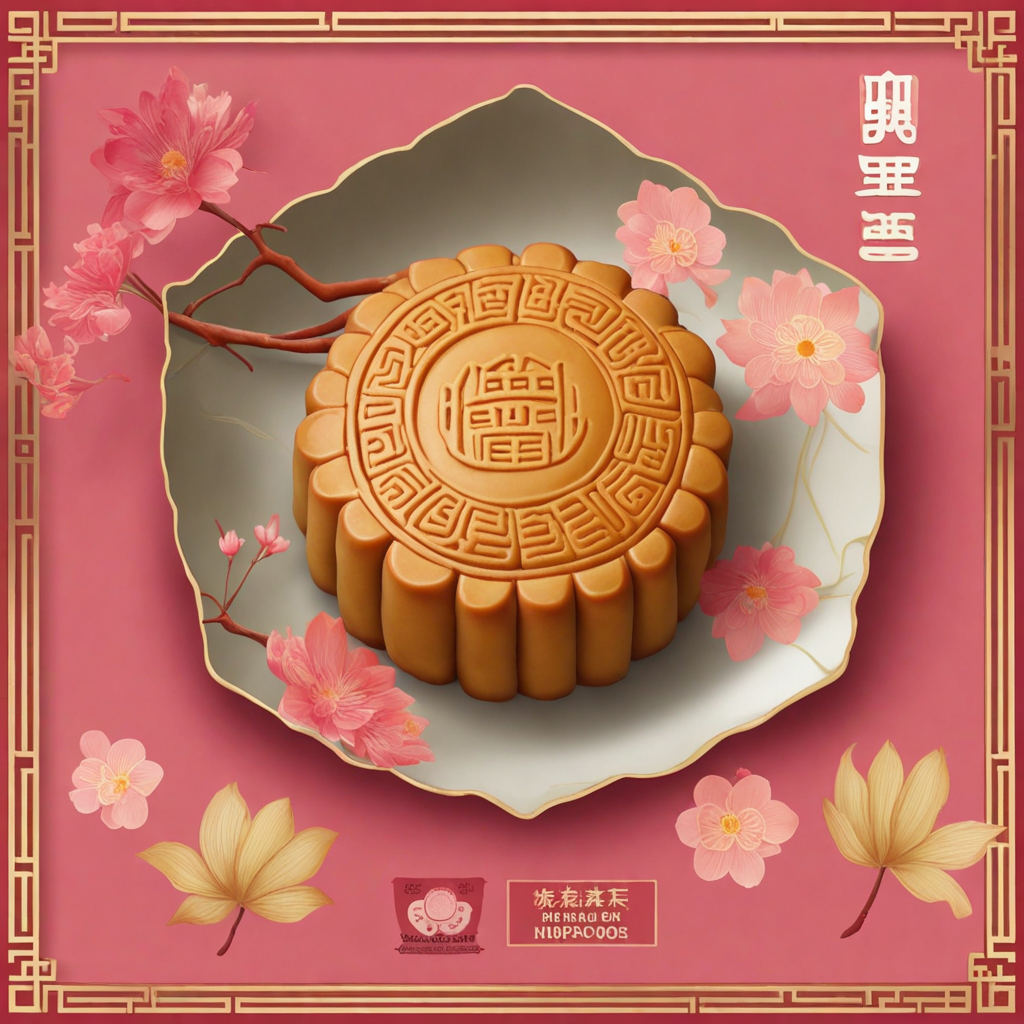Pandan Chiffon Cake
Pandan Chiffon Cake is a delightful and airy dessert that hails from Southeast Asia, particularly beloved in Singapore. This cake is characterized by its light and fluffy texture, achieved through the unique method of folding whipped egg whites into the batter. The star ingredient, pandan leaf, imparts a vibrant green hue and a distinctive aroma reminiscent of vanilla, making each bite a fragrant experience. The subtle sweetness of the cake is perfectly balanced with its moist crumb, resulting in a treat that is both comforting and refreshing.
The preparation of Pandan Chiffon Cake often involves extracting the juice from fresh pandan leaves, which lends the cake its signature flavor and color. This natural ingredient not only enhances the cake’s taste but also connects it to the rich culinary traditions of the region. As the cake bakes, it rises beautifully, creating a tall and impressive structure that is often served in slices, showcasing its airy interior.
How It Became This Dish
The Enchanting History of 斑斓戚风蛋糕 (Pandan Chiffon Cake) #### Origins The 斑斓戚风蛋糕, or Pandan Chiffon Cake, is a delightful dessert that has become a quintessential part of Singaporean culinary culture. Its origins can be traced to the broader Southeast Asian region, where pandan leaves, known for their aromatic fragrance, have been used in cooking for centuries. The pandan plant (Pandanus amaryllifolius), often referred to as the "vanilla of Southeast Asia," is native to tropical regions and has been cultivated for its culinary and medicinal properties. The chiffon cake itself, a light and airy cake, originated in the United States in the 1920s. It was created by an American salesman named Harry Baker, who first introduced it to the public in 1927. Baker's chiffon cake combined traditional sponge and butter cake recipes, resulting in a cake that was both rich and airy—a revolutionary concept at the time. The cake gained popularity through its unique texture and versatility, paving the way for various flavor adaptations. In the mid-20th century, as Singapore's culinary landscape began to evolve, the chiffon cake underwent a transformation. Local bakers, influenced by the region's rich flavors and ingredients, started incorporating pandan into the recipe. This marked the birth of the Pandan Chiffon Cake, combining the lightness of the chiffon with the distinct, sweet, and slightly grassy flavor of pandan. #### Cultural Significance The 斑斓戚风蛋糕 is not just a cake; it embodies the multicultural tapestry of Singapore. The nation is known for its harmonious blend of Malay, Chinese, Indian, and Western influences, and the Pandan Chiffon Cake reflects this culinary fusion. Pandan has long been a staple in Malay cuisine, used in various desserts and dishes, while the chiffon cake itself has Western roots. This intersection of flavors and traditions makes the cake a symbol of Singapore's multicultural identity. In Singapore, pandan chiffon cake is often served during festive occasions, family gatherings, and celebrations. Its vibrant green color, derived from the juice of pandan leaves, is visually appealing and evokes feelings of joy and festivity. The cake is especially popular during Hari Raya Puasa, the celebration marking the end of Ramadan, and during Chinese New Year festivities. Its light, fluffy texture and sweet aroma make it a favorite among both young and old, and it has become a staple in local bakeries and homes. Moreover, the cake is often associated with the concept of "kuih," which refers to a variety of traditional snacks and desserts in Southeast Asia. Kuih are typically made using local ingredients, and pandan chiffon cake fits seamlessly into this category. Its preparation and presentation often involve family members coming together, highlighting the importance of community and shared experiences in Singaporean culture. #### Development Over Time As the years progressed, the Pandan Chiffon Cake gained widespread popularity across Singapore and beyond. The recipe evolved, with bakers experimenting with different techniques, flavors, and presentations. In the 1980s, the cake began to appear in more upscale bakeries, often adorned with icing, fruit toppings, and decorative elements, making it a sought-after dessert for special occasions. One of the notable developments in the cake's history is the rise of home baking. With the advent of social media and the increasing interest in culinary arts, many home bakers began to share their versions of the Pandan Chiffon Cake online. This not only popularized the cake but also sparked a trend of innovation. Bakers started experimenting with variations, incorporating ingredients such as coconut milk, lime zest, and even chocolate to create unique renditions of the classic. The introduction of modern technology has also impacted the way the cake is made. While traditional recipes relied on manual whisking and baking techniques, many bakers now utilize electric mixers and ovens that allow for more precise control of the baking process. This has led to an increase in the cake's consistency and texture, enabling more bakers to achieve the perfect rise and fluffiness that the Pandan Chiffon Cake is known for. Furthermore, the popularity of the cake has transcended Singapore's borders. It has gained recognition in various parts of Asia and has made its way to Western countries, where it is often featured in Asian bakeries and restaurants. The vibrant green hue and unique flavor of the Pandan Chiffon Cake have intrigued many food enthusiasts, contributing to its status as an emblematic dessert of Southeast Asian cuisine. #### The Pandan Chiffon Cake Today Today, the 斑斓戚风蛋糕 is celebrated not only as a dessert but also as a representation of Singapore’s culinary heritage. It has earned its place in the hearts of many, both locally and internationally. The cake is often served in a variety of settings, from casual tea gatherings to elegant celebrations, and it continues to find its way into the kitchens of home bakers eager to recreate this beloved treat. In contemporary Singapore, the cake has also become a canvas for creativity. Bakeries experiment with flavors and textures, introducing fusion elements such as matcha, durian, and even savory versions that incorporate cheese or herbs. This evolution showcases the adaptability of the Pandan Chiffon Cake, allowing it to remain relevant in the ever-changing culinary landscape. Moreover, the rise of health-conscious eating has prompted some bakers to develop lighter versions of the cake, using alternative sweeteners or gluten-free flours, ensuring that the Pandan Chiffon Cake remains accessible to everyone. #### Conclusion The 斑斓戚风蛋糕 is more than just a dessert; it is a celebration of culture, tradition, and innovation. Its journey from the traditional kitchens of Southeast Asia to the modern bakeries of Singapore reflects the dynamic nature of food and its ability to evolve while retaining its roots. As the world continues to embrace culinary diversity, the Pandan Chiffon Cake stands as a testament to the rich history and interconnectedness of flavors, embodying the spirit of Singapore’s multicultural heritage. Whether enjoyed at a family gathering or a stylish café, this cake remains a beloved symbol of joy, community, and the beauty of shared culinary experiences.
You may like
Discover local flavors from Singapore


